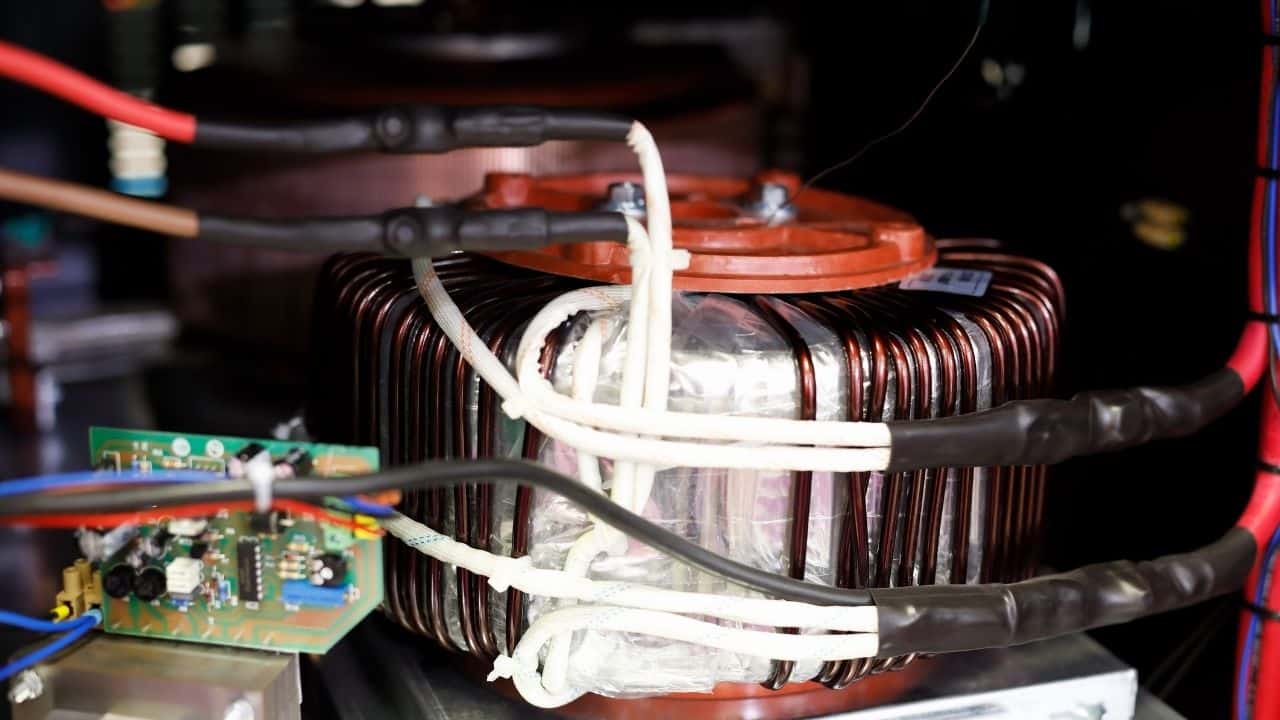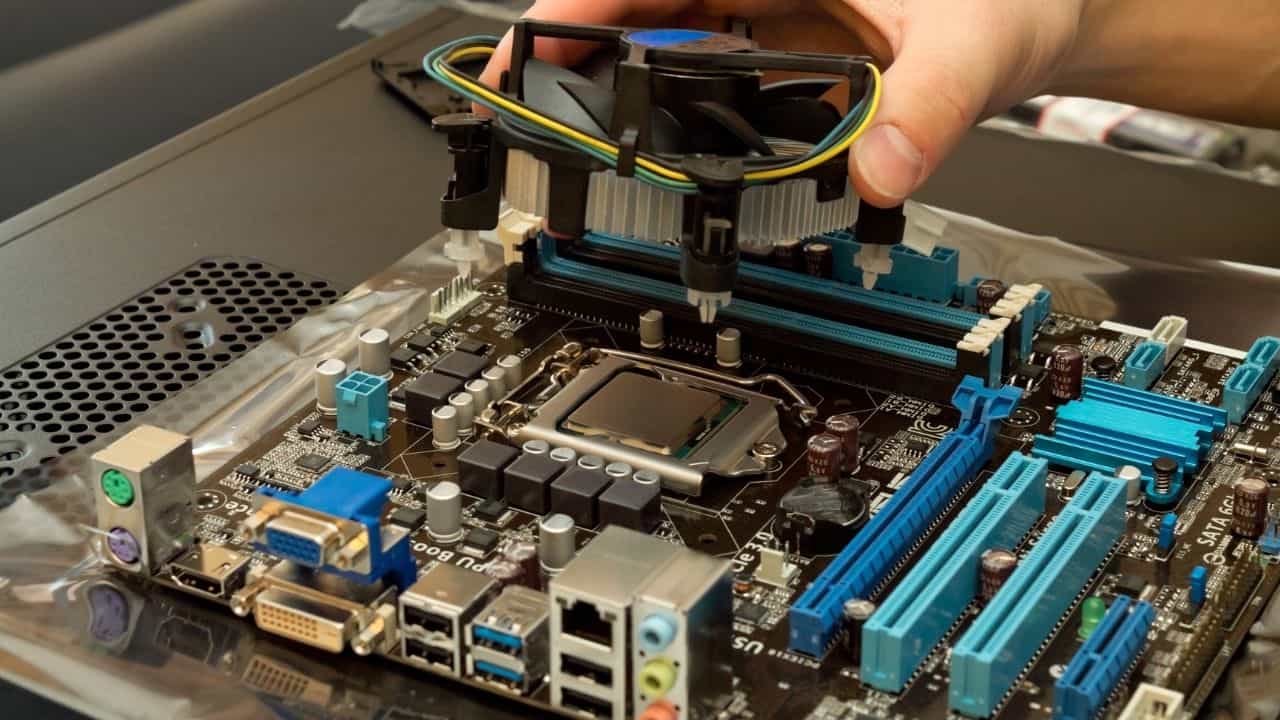- Front Case Fan Not Spinning: [3 Proven Fixes That Work - June 22, 2022
- Is 60 Degrees Celsius Hot For A CPU In 2022? [Must-Read] - June 7, 2022
- How To Handle CPU Temps Jumping: A Definitive Guide [2022] - June 2, 2022
Your power supply (PSU) is one of the most important parts of your computer, producing and converting power for every single part of your computer. However, when the system is not properly cooled, it can be the main cause of full system failure; knowing how to get PSU temperatures is important.
Most PSUs don’t have internal temperature monitors; you will have to use a thermometer on the outgoing air to measure its temperature. If your PSU does have a monitor, the BIOS will display the temperature or use a monitoring software inside your operating system (OS).
It is important to understand how PSU temperatures will affect the overall health of your computer, with most systems instantly shutting down when they overheat. Knowing how to monitor PSU temperatures is related to the computer power supply health when it is constantly running.
Contents
Why is Checking PSU Temperature Important?
Because the PSU is connected to every part of your computer, it may blow some internal parts when it overheats, causing a surge. When the PSU does surge or blows up, it can break almost every component inside your computer, like the motherboard, the graphics card, and the hard drives.
If the computer power supply is always heating up to an extreme degree, it will naturally affect the overall health of the computer power supply. When the PSU is constantly forced to restart because of its overheating, it will become unstable, eventually becoming damaged beyond repair.
Further, a power supply has a lower tolerance for overheating than any other component in your computer. It is overheating; it does not reach high enough temperatures to damage other components through heat, but it can short out for a split second before shutting down.
Do PSUs Have Any External Output for Temperature?
No, standard PSUs do not have temperature monitors, with most mid-range gaming computers coming with these standard PSUs. Enthusiast and server-grade PSUs will have temperature monitors that work through a connection provided by their fans; these PSUs are significantly more expensive.
Most PSUs will have built-in temperature ranges that they can operate at; the manufacturer sets a PSU maximum temperature that they cannot exceed. These safety systems cause a PSU to instantly shut down when they start to overheat, causing total system failure.
Usually, when people start wondering if it is bad to run their GPU fan at 100% all-time to compensate for the heat, it is a sign that something is wrong. Your GPU is the closes temperature monitoring point inside standard systems that can sense the heat from a PSU.
Method 1 of 3: Using temperature monitor application
While you cannot monitor the temperature for your PSU directly through the computer you are using, unless you have a more expensive PSU, there are ways of seeing system temperatures. We recommend using either Realtemp or Coretemp as they use the onboard monitoring of your system.
Realtemp vs. Coretemp has long been an argument enthusiast have fought over, with many wondering if a monitoring software like Realtemp is safe. However, understanding how to use both of these programs will enable you to keep an eye on the internal temperatures comfortably.
- Step 1: Go to the Coretemp or Realtemp websites and download the program version that will work with your OS. If you are running a Linux system, we recommend that you install Psensor to see every internal part’s temperature.
- Step 2: Install the software on your computer, allowing it to run at either administrator levels or simply access parts of your system. The installer will prompt you with a permission screen when needed, installing it on your main hard drive.
- Step 3: Open the software once installed and familiarize yourself with the layout. Coretemp has a simpler layout than Realtemp; however, Realtemp allows you to see the temperature and voltage levels of more components of your system once the settings have been changed.
- Step 4: Both programs will list the temperature of your CPU, if you see these temperatures increasing without warning it may be a sign that your PSU is overheating the entire system.
Method 2 of 3: Checking Exhaust air temperature manually
PSU temperature software is rare and can usually not help you determine the exact temperatures of your PSU. A better way to get an accurate pc PSU temperature monitor we recommend using physical tests to see the temperature of the PSU, measuring the exhaust air of the PSU.
Ideally the exhaust fan temperature should be around the ambient air temperature when you are not actively gaming on the computer. Once you are running software like Adobe, games, or benchmarks the highest temperatures should only be about 7oC or 8oC above ambient.
Option 1: Using A Thermometer
These are the thermometers we are all familiar with, usually used for measuring your temperatures. Almost all of these come with a setting to measure ambient or surface temperatures that are not humans or animals, for the average PC user we recommend the Touchless Thermometer.
However, if you are going to be carrying the Computer around to other places we recommend the Digital Medical Infrared Thermometer as it is a lot more compact. While not as accurate you can get more constant heat readings from the air using a Humidity Gauge placed next to the vent of the PSU.
Option 2: Using Your Hand/Palm
A bit more tricky, as you will need to know what hot air feels like; the breath you breathe is usually around 34C to 36C. Your PSU exhaust fan should have air slightly hotter than this, but not so hot that it feels like a fan heater, the palm of your hand is sensitive enough to feel this difference.
When the computer has been running for a while simply place your palm in front of the PSU exhaust fan. If the heat is uncomfortably hot or almost scorching then your PSU is overheating and you will need to shut down the computer and find the source of the overheating.
Method 3 of 3: Using an External Probe
The preferred method of getting the PSU operating temperatures for anyone regularly working with a PSU. When testing your PSUs temperatures, it is not entirely accurate to even measure the air temperature from the fans; instead, you will use the probe to measure everything.
Recommended Tools and Kits
We recommend getting the Proster Digital Thermocouple for probing your PSU and getting the best possible results when measuring. It has two probes included with the kit to measure both the outside and the inside temperatures that your PSU is reaching.
- Step 1: Connect the probes to the thermometer, and then using tape, secure the probes onto the power supply. One on the outside casing and one simply going through the grill at the back of the PSU, making sure it does not touch anything.
- Step 2: Start the system and, if needed, start putting it under strain, either by playing a game or doing a benchmark.
- Step 3: Once the system has run for a few minutes, start measuring the temperatures, taking them down on a piece of paper.
- Step 4: If the temperatures are no longer climbing or dropping erratically, you have the PSU temperature. If it reached above 65oC, then it has thoroughly overheated at least once.
What is the ideal temperature for a PSU?
Ideally, a PSU will run barely hotter than the ambient temperatures in a room, with the PSU comfortably staying at whatever this temperature is. The best temperatures are between 10oC and 40oC, with the PSU fans not even starting up if the ambient temperatures are too low.
As your computer experiences the maximum temperatures that it can handle, with the PSU max temperature only being around 65oC, it can affect the overall computer PSU health. Every time a component in your computer overheats, it gets a little bit more damaged.
This is why you will find that people that are known to overclock their computers will have trouble selling the computers down the line. This is why you should be careful when overclocking your computer, as it can drastically affect the overall health of your computer.
FAQs (Frequently Asked Question)
Does PSU affect CPU temperature?
No, the PSU overheating does not affect the CPU temperature, but changing the voltage in the BIOS for your CPU will cause a shift in temperature.
How to check PSU wattage?
The total wattage will be displayed on a sticker on the side of your PSU, with a table that shows how much voltage and amplitude each cable on the power supply can handle.
How to check PSU load?
You will have to buy a special wattage reader that is between your wall socket and the PSU to measure the total load on the PSU.
How hot should my PSU be?
A PSU should run at ambient temperature when just started, and when at load, never go above 45 degrees Celsius.
Final Words
Your PSU is a vital part of your computer that can outlast most of the other components that you have in the system. However, it can overheat when you are overclocking or have too many power-hungry components; you must always have a PSU that can supply slightly more power.
A great deal many first-time computer builders make the mistake of buying a PSU that is just enough to power their systems. When they upgrade to new CPUs or GPUs, they draw too much power, and the power supply overheats.



![How To Know If CPU Is Dead? [A Comprehensive Guide 2022] How To Know If CPU Is Dead? [A Comprehensive Guide 2022]](https://maximum-tech.net/wp-content/uploads/2022/04/How-To-Know-If-CPU-Is-Dead-150x150.jpg)
![How To Change CPU Fan Speed Without Bios? [Easy Guide] How To Change CPU Fan Speed Without Bios? [Easy Guide]](https://maximum-tech.net/wp-content/uploads/2022/05/How-To-Change-CPU-Fan-Speed-Without-Bios-150x150.jpg)
![PC Keeps Restarting Before Bios - 5 Reasons And Fixes [2022] PC Keeps Restarting Before Bios - 5 Reasons And Fixes [2022]](https://maximum-tech.net/wp-content/uploads/2022/01/PC-Keeps-Restarting-Before-Bios-Reasons-And-Fixes-150x150.jpg)
![Best CPU for Minecraft In 2022 [7 Worthy Picks Reviewed] Best CPU for Minecraft In 2022 [7 Worthy Picks Reviewed]](https://maximum-tech.net/wp-content/uploads/2022/04/best-cpu-for-minecraft-150x150.jpg)
